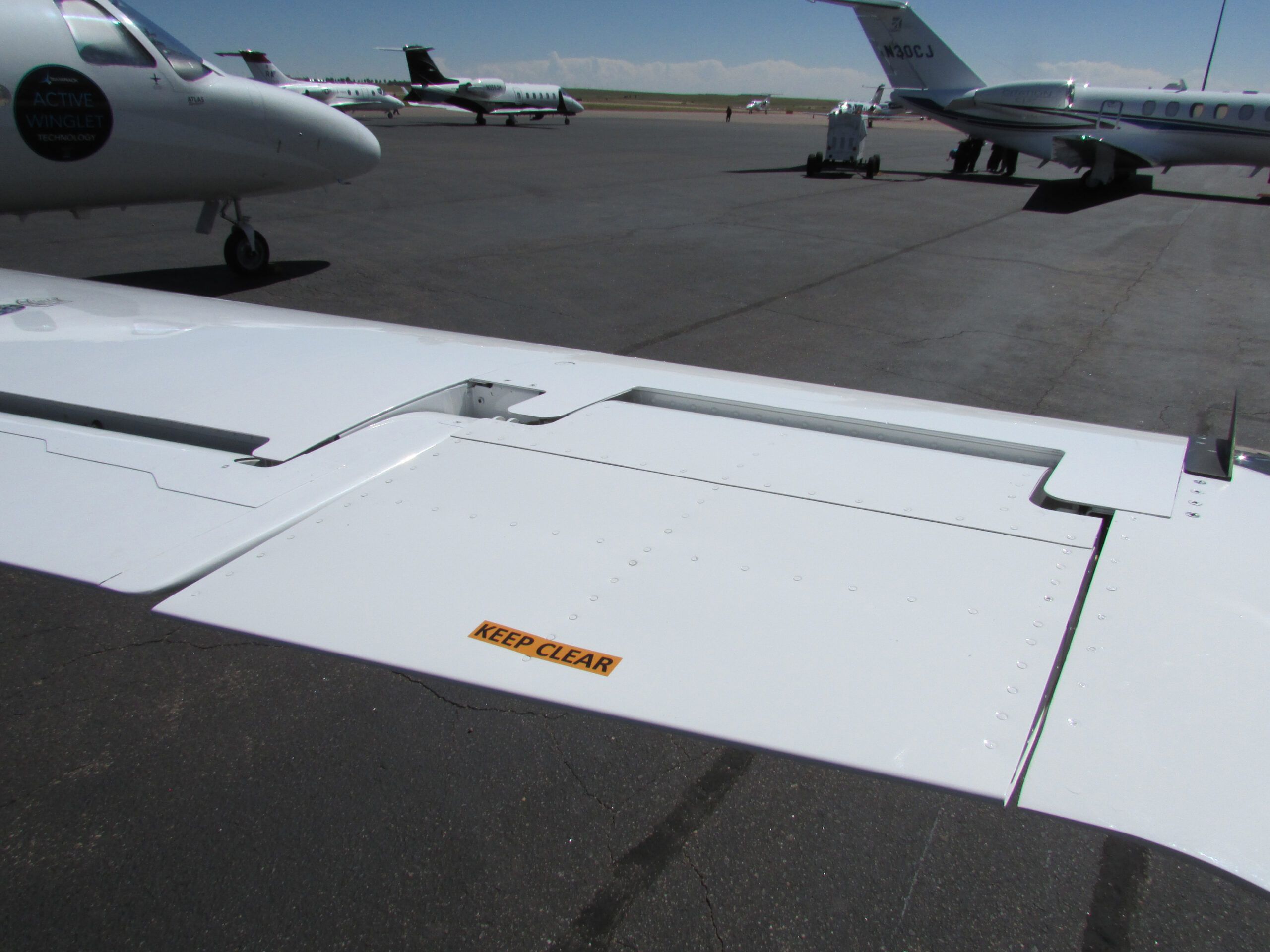The NTSB has released its final report on a 2018 Cessna Citation crash near Memphis, Indiana, and the board blames the jet’s active winglets for the loss of control. But Sandpoint, Idaho-based Tamarack Aerospace, the manufacturer of the Active Technology Load Alleviation System (Atlas) control system, “strongly disputes” the findings.
The Atlas system uses small movable auxiliary surfaces called Tamarack Active Camber Surfaces (TACS) attached to the wing to alleviate stress induced by the winglets. This enables installing winglets without adding complex additional structure to the wing spars, which would be necessary due to the added load induced by the winglets.
The NTSB wrote in its report that the left TACS malfunctioned shortly after takeoff. The board wrote that it became stuck “trailing edge up” on the left wing “for reasons that could not be determined.”
Tamarack responded: “The forensic evidence collected in the investigation indicates that the load alleviation system was indeed operational. There are inconsistencies within the report that do not support the conclusion published by the NTSB.”
As an example, Tamarack cited what it claims are discrepancies in the bank angle at which the pilot should have been alerted, among others. For its part, the NTSB wrote, “The investigation found that five uncommanded roll incidents have been reported to either the European Union Aviation Safety Agency or the Federal Aviation Administration involving airplanes equipped with Atlas.”
The company said on Thursday: “Tamarack intends to request the NTSB reconsider its finding, as per its own procedures. Tamarack will provide a more detailed response after further consideration of the NTSB’s recent announcement.”




































The aircraft in this accident departed from Jeffersonville, Indiana (JVY) and crashed three minutes later near the tiny community of Memphis, INDIANA. It is just across the Ohio River from Louisville, Ky.
Bill,
Thanks for the correction.
The ATLAS system allows the addition of winglets without major wing modifications? That installation looks pretty extensive. I’m maybe not an expert, but if a winglet prevents loss of lift by delaying air spillover at the tip then shouldn’t the resulting lower AOA compensate the need to beef up the spar? And if ATLAS does reduce wing load created by a winglet, then isn’t it just recreating the drag? Sounds like the sytem is chasing itself?
The Tamarackaero website lists efficiency/performance-enhancing specs, explains the need to beef up the spar with other winglet mods, and why the Atlas obviates the need.
Somewhere in their cutesy website – excessive number and size of graphics, not enough detail.
Serious stuff, claimed fuel benefit is huge, I don’t see detail of design for safety.
I do find with effort that there is only _one_ control unit.
How fail safe is it?
“That installation looks pretty extensive.”
Haha. Yeah, I thought the same thing. Lots going on out there, besides stuff you don’t see such as actuators and computers.
That is a major control modification that takes the pilot out of the loop.
Sound like MCAS v. 2.0.
I’ve followed this company for years and my dentist had the mod on his plane. It seems to work great when it does. Don’t understand why Tamarack doesn’t go sell this to Textron and make it OEM. When it goes awry it needs a knock-out option like elevators on 737 MAX or an improved design. Now we have a bunch of grounded 525s for what good reason ?